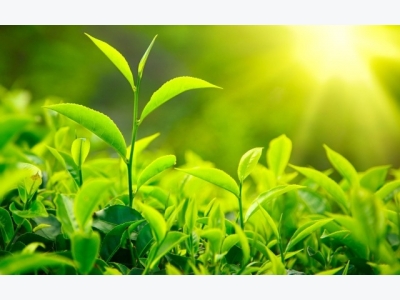Chinese researchers read the tea genome. Its four times that of coffee

WASHINGTON DC, U.S. – There are lots of different kinds of tea—black tea, green tea, white tea, oolong and more. Like coffee and wine, the flavor of tea is shaped by the soil in which tea plants are grown, the variety of the bush, as well as how it is dried and processed.
But the biggest factor is something researchers have not had access to until now: the genome of Camellia sinensis.
This species produces almost all of the world’s tea (except for herbal, rooibos tea and that fruit-flavored stuff).
As Ben Guarino at the Washington Post reports, researchers from the Kunming Institute of Botany in China recently published the first draft of tea’s genome in the journal Molecular Plant, which will allow scientists to begin reading the tea leaves about, well, tea.
According to a press release, the genome has confirmed some things researchers already suspected. For instance, they believed much of tea’s flavor comes from a flavonoid called catechin.
And while all the plants in the genus Camellia can produce catechin and caffeine, the species commonly used for tea (sinensis) expresses those particular genes at a much higher levels. This means its leaves contain more catechin and caffeine, making it the only species suitable for producing tea.
There were some surprises, too. For instance, the genome has over 3 billion pairs, making it four times the size of the coffee genome.
That’s likely because the sequence is full of what’s known as “jumping genes,” which can copy themselves and then insert into the genome multiple times. All of that repetition made sorting out the sequence extra difficult. In fact, it took over five years to piece it together.
“Our lab has successfully sequenced and assembled more than twenty plant genomes,” Lizhi Gao, plant geneticist and an author of the study, says in the press release. “But this genome, the tea tree genome, was tough.”
Now that the first draft is finished, Gao says the team will begin double-checking the work and also examine different varieties of tea from around the world to figure out how genes affect flavor. Even as the work continues, the new road map could help cultivators figure out how to breed new tea plants.
The results of the study could not only impact the breeding of tea, but also breeding of other plants used medicinally or in cosmetics, Monique Simmonds, deputy director of science at Kew Royal Botanic Gardens in the UK, tells Helen Briggs at the BBC. “[T]he compounds that occur in tea are often associated with the biological properties of plants used medicinally or in cosmetics,” she says.
This is just the latest in stimulating beverage research. In 2014 researchers published the genome of robusta coffee, which makes up about 30 percent of the world coffee market. And in January, scientists published the genome of Arabica coffee, which makes up the other 70 percent of the market.
One of the big hurdles all of these beverages face is climate change, which could impact tea growing regions and is already impacting the flavor of some teas. Coffee, which grows best in certain microclimates, is facing similar pressures.
It’s possible that using the new genomes breeders and scientists can produce plants that are able to withstand changing climates, temperatures and emerging diseases.
Let’s hope that’s the case. The quali-tea of our daily caffeine sources depend on it.
Author:
Jason Daley is a Madison, Wisconsin-based writer specializing in natural history, science, travel, and the environment. His work has appeared in Discover, Popular Science, Outside, Men’s Journal, and other magazines.
Related news
 Big investors pour money into agriculture, organic food
Big investors pour money into agriculture, organic food The repeated alarms about unsafe food has brought great opportunity to several big investors, who have been pouring money into organic food projects.
 Kien Giang: WB-funded project helps change old farming practices
Kien Giang: WB-funded project helps change old farming practices A World Bank-funded project has improved capacity of agricultural cooperatives in the Mekong Delta province of Kien Giang and helped change the farming
 Ethiopia: coffee export value chain framework up for major reforms
Ethiopia: coffee export value chain framework up for major reforms Some of the major findings of the committee include fewer incentives for the coffee growers and exporters, finance constraint, extended value chain